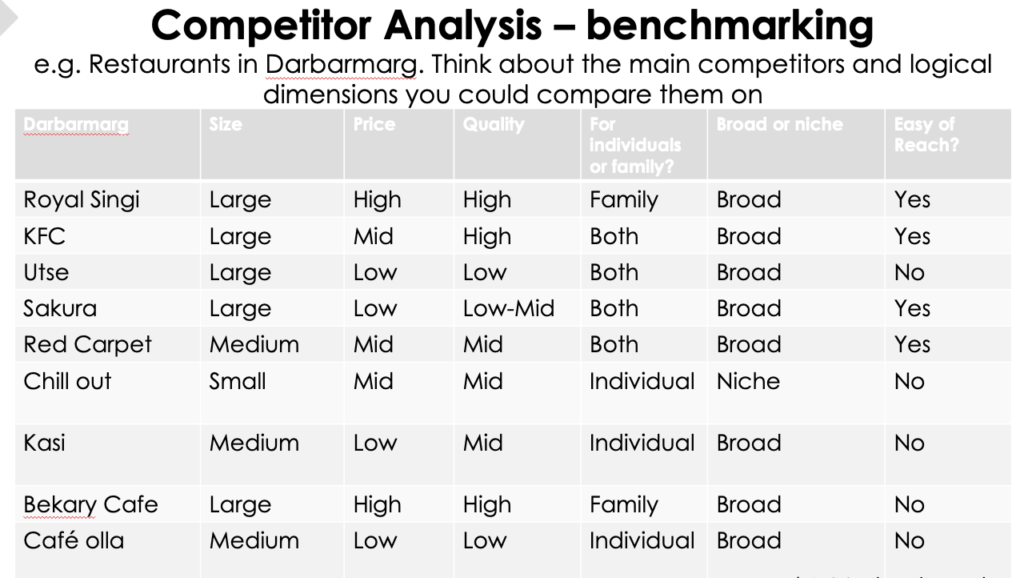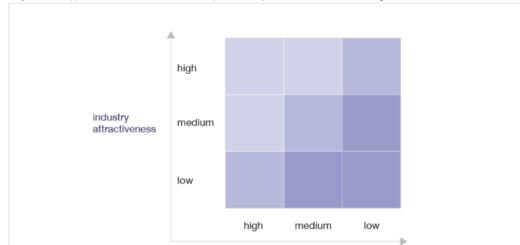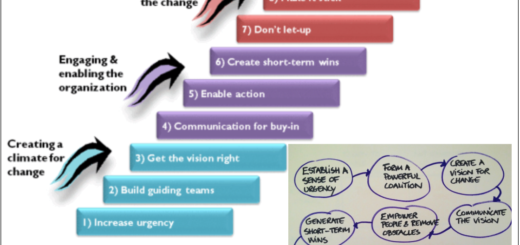Competitor Analysis – Benchmarking
Competitor analysis is the process of identifying and evaluating the strengths and weaknesses of competitors and understanding their strategies, goals, and market positioning. Competitor analysis is an assessment of the strengths and weaknesses of current and potential competitors.
- Provides both an offensive and defensive strategic context to identify opportunities and threats.
- Helps in efficient and effective strategy formulation, implementation, monitoring, and adjustment.
One common and useful method of Competitor Analysis is by constructing a competitor array. The steps include:
- Define your industry – scope, and nature of the industry
- Determine who your competitors are – Immediate and Distant!
- Determine who your customers are and what benefits they expect
- Determine what the key success factors are in your industry
- Rank the key success factors by giving each one a weighting – The sum of all the weightings must add up to one.
- Rate each competitor on each of the key success factors
- Multiply each cell in the matrix by the factor weighting.
- This can best be displayed on a two-dimensional matrix – competitors along Y-Axis and key success factors along X-Axis
Benchmarking
Benchmarking is a process of comparing an organization’s performance, practices, or products against those of competitors or industry best practices. The goal of benchmarking is to identify areas of improvement and opportunities to increase efficiency, reduce costs, improve quality, or enhance overall performance.
Benchmarking involves identifying key performance indicators (KPIs) that are important to the organization and comparing these metrics against those of other companies or industry best practices. These metrics could include financial performance, customer satisfaction, product quality, or employee productivity.
There are different types of benchmarking, including internal benchmarking, competitive benchmarking, and functional benchmarking. Internal benchmarking involves comparing an organization’s performance across different departments or business units. Competitive benchmarking involves comparing an organization’s performance against direct competitors, while functional benchmarking involves comparing a specific business process or practice against those of other companies in the same industry.
Benchmarking is a valuable tool for organizations as it helps to identify areas of weakness and opportunities for improvement. By understanding how other companies or industry best practices perform in key areas, organizations can develop strategies to improve their performance, reduce costs, and enhance overall competitiveness in the market.

Different Steps of Benchmarking
There are several steps involved in conducting a benchmarking analysis:
- Identify the areas to benchmark: The first step in benchmarking is to identify the key areas of an organization’s operations to benchmark. These could include areas such as product development, marketing, sales, customer service, or financial performance.
- Identify the competitors to benchmark: Once the key areas are identified, the next step is to identify the competitors to benchmark against. This could include direct competitors, as well as companies in related industries that offer similar products or services.
- Gather data: The next step is to gather data on the competitors’ performance in the benchmarked areas. This could involve analyzing financial statements, market research reports, customer feedback, and other sources of information.
- Analyze the data: After gathering the data, it is important to analyze it and identify any patterns or trends that emerge. This can help to identify areas of strength and weakness for both the organization and its competitors.
- Develop an action plan: Based on the results of the benchmarking analysis, the next step is to develop an action plan to address any areas of weakness and capitalize on areas of strength. This could involve making changes to the organization’s strategy, processes, or practices to improve performance.
Overall, benchmarking is a useful tool for competitor analysis as it provides an objective basis for comparison and can help to identify areas for improvement. By understanding how competitors are performing in key areas, organizations can develop strategies to stay competitive and improve their performance in the market.





